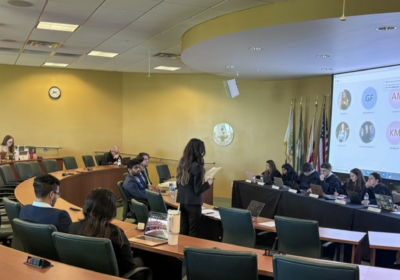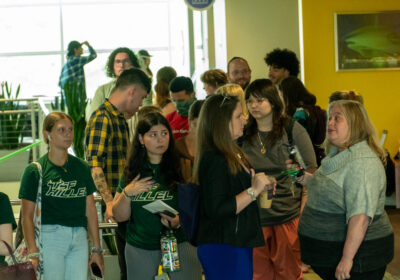Midterm election voting begins

Students can vote for SG Senators using the iPads provided at stations across campus. ORACLE PHOTO / ADAM MATHIEU
Voting begins today for Student Government (SG) Senate midterm elections.
Students can vote for SG Senators using the MyUSF mobile application or visiting voting stations set up at the Marshall Student Center, the Library and Juniper-Poplar Hall.
The stations are open from 10 a.m. to 5 p.m. today and Wednesday. They will provide students with iPads to cast their vote.
Students may vote for a representative from their respective college, such as College of Education or College of Nursing.
There are also new campus-wide seats, called at-large seats, which students vote on independent of the seats available for their college.
Last month, SG reformed the elections to create at-large seats for when there are more vacant seats than there are applications for a particular college during a midterm election.
“It was changed to get more representation in the Senate and to get a higher attendance rate,” said SG Supervisor of Elections John Quiroz. “We thought it was best for the student body to have at-large seats.”
The SG Senate is responsible for paying for clubs, activities and service projects from money collected through student fees.
“Senate allocates 14 million dollars,” Quiroz said. “If you want something to change on campus, you should vote.”
There are nine people running for at-large seats.
For college seats, there are five running for four Arts and Sciences seats, seven running for four College of Education seats, six running for two USF Muma College of Business seats, one running unopposed for a College of Medicine seat, one running unopposed for a Patel College of Global Sustainability seat, one running unopposed for a College of Nursing seat, and one running unopposed for a College of Public Health seat.
“Voices that go unheard are the people who don’t vote,” Quiroz said. “Students who don’t vote allow a small minority of the USF population to make decisions for 40,000 students.”






